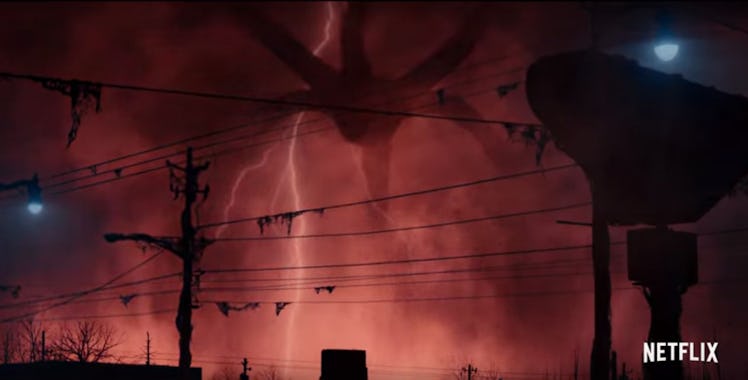
This Character From Dungeons & Dragons May Be A Big Part Of 'Stranger Things' Season 2
Stranger Things Season 2 arrives on Netflix in only a few short weeks, proving that sometimes, good things can stay. At least, they can when they're airing on a streaming service that renews every show they run. (They even gave a Season 2 to Friends From College, people.) The Duffer Brothers knew they were getting a Season 2, as they set up the next Big Bad Monster to come out of the Upside Down, the Thessalhydra, in the Season 1 epilogue. But what is the Thessalhydra on Stranger Things? And how many fireballs should we be preparing to throw at it?
Like the Demogorgon before it, the Thessalhydra is a creature out of the Dungeons & Dragons pantheon. Unlike the Demogorgon, it was not from the original Monster Manual in the 1970s, but added in with the first edition of Monster Manual II in 1983, meaning that when we saw Mike draw it out to attack in the epilogue last year, it was a brand new monster that had just been added to the game.
Also, unlike the Demogorgon, which has roots as an "underworld dwelling primordial being" from the Dark Ages of 350 AD, and had been mentioned in manuscripts over the years through the 1600s, the Thessalhydra is a creature wholly invented for the Dungeons & Dragons game.
So what is it, exactly? The Thessalhydra was part of a series, known as the Thessalmonsters. The Thessalhydra was first, followed by the Thessalmera (1985), and the Thessalgorgon and Thessaltrice (1989.) The thessal- prefix is because all of these creatures were supposedly designed by a powerful undead creature called a "lich", named Thessalar.
All these creatures call back to Greek mythology, and all are designed to be different versions of the legendary Hydra. (Supposedly the Thessalhydra was an "unstable" creature that could breed with other monsters to create variants.) All versions have eight heads, and the changing suffixes denote what sort of heads they are: chimera, gorgon, cockatrice.
Let's talk a little about the Thessalhydra, and her eight, snake-like Hydra heads. The major difference between a regular Hydra and Thessalhydra is the formation of these heads. The original creature just had all eight sticking out of the same neck.
In the Thessalhydra, those heads "form a ring around a large, circular mouth rimmed with jagged teeth" and a pincher tail to pop unsuspecting victims into said mouth. Oh, and it spawns by "infecting the host with larve." Sounds like we might know what Will spit up in the sink, then.
The original Hydra in mythology was actually the Hydra of Lerna, and in the Greek canon, killing it was one of Hercules' famed "12 Labors." Killing it was so difficult because, as the saying goes, with a Hydra, cut off the head, and another grows back. (In the famous Euripides version, it's "two grow back.")
How did Hercules finally defeat the Hydra? He asked his son, Iolaus, for help. Working in tandem, Hercules would chop a head, and Iolaus would cauterize the stump with fire, to keep a new one from growing back.
As we learned from the end of Stranger Things Season 1, defeating the Thessalhydra is also a fire-based endeavor, requiring a nice high roll of the dice to get one going. But defeating the Demogorgon in the Upside Down wasn't strictly in line with the game in Season 1. Instead, that creature drew upon the metaphor of the version in the game, as an "unstoppable creature" from the underworld (aka the Upside Down) that sowed chaos.
With that in mind, we should assume that the many-headed creature we see in the trailer will probably not resemble the game piece Thessalhydra we see on the board. The metaphorical nature of it is what will matter.
It is a creature that was designed by someone of "the underworld" (aka, the scientists who control the Upside Down.) It is based on a mythological creature the requires teamwork to put down. This means that this season, Eleven can't just walk in and start kicking butt. She's going to need her boys to step up as a team.